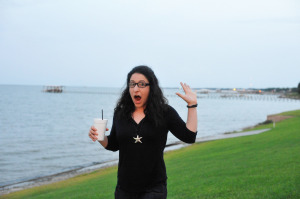by Sam Tackeff | Sep 25, 2012 | Blogging, Challenge, Restaurants
Sometimes I deal with bouts of anxiety and sadness. It happens. After the absolute thrill of completing my very first race on Sunday, I got into a funk. I’m not quite talking about depression (that’s another beast entirely), but more of a general gloom. Time and again, what follows intense highs of accomplishment is self doubt, criticism, or anguish. Was it good enough? Does it matter? While I spent a lot of time worrying as a child that it might just be me, I’ve realized over the years that it happens to a lot of people, people I respect, people I love, maybe even you, and I shouldn’t be ashamed of it. I went to particularly competitive schools, worked with highly driven people, and this gloom was something that seems inescapable.
This is where writing comes in. It’s one way to find solace when you are feeling badly, to lift yourself up when you feel like sulking. After waking up glum, I took this picture of my morning coffee. And then I set about writing my race recap. I debated omitting my time – it’s too slow. they will judge. – and even pictures of myself – i’m sweating. my face is red. these gym clothes look ridiculous – and my favorite – who cares about this. it’s not even a big deal. But I decided to include everything, as honestly as possible. And I could not have been more thrilled at how many of you responded in big ways and small, to remind me that my accomplishment was really just that, something I should be proud of.
So for that, I thank you.
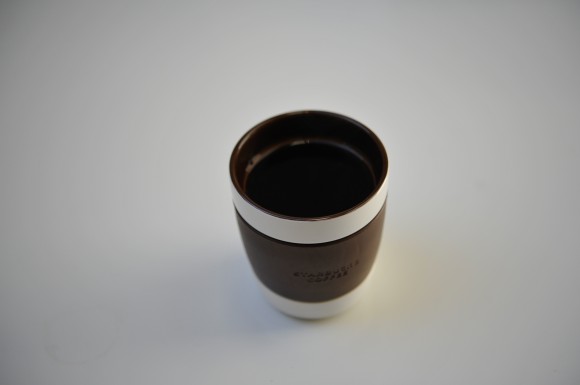
Another wonderful thing to combat gloom is spending time with dear friends. I was so lucky to get Caroline for one more day before sending her back off to Texas. We spent the afternoon running around her old grad school haunts at Hahhhvahhd, and took lunch at Upstairs on the Square.
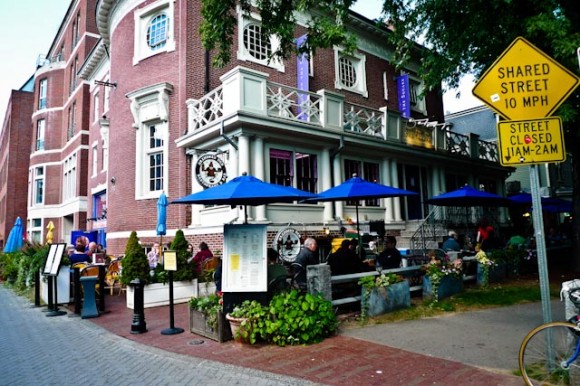
I hadn’t visited the place since my senior year of college, and was happy to enter into the land of whimsy again. The interior is decorated as a 7 year old’s fantasy land, but the entire place has subtly macabre details, such as wall paintings of cheerful zebras being attacked by arrows. I love it.
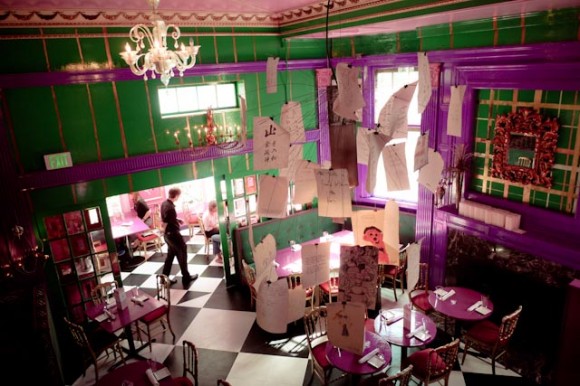
For lunch, I yet again found myself chatting with a supremely patient and friendly waiter about my food restrictions – no dairy, no gluten, and a few other things I can’t do. Another success – I ended up with this Salad Niçoise, with egg, Italian tuna, white anchovies, tomatoes, olives and capers, omitting the fingerlings and aioli. Instead of the vinaigrette, I ordered a side of oil and vinegar. I looked longingly at their delicious bread basket, but this was quite a good meal.
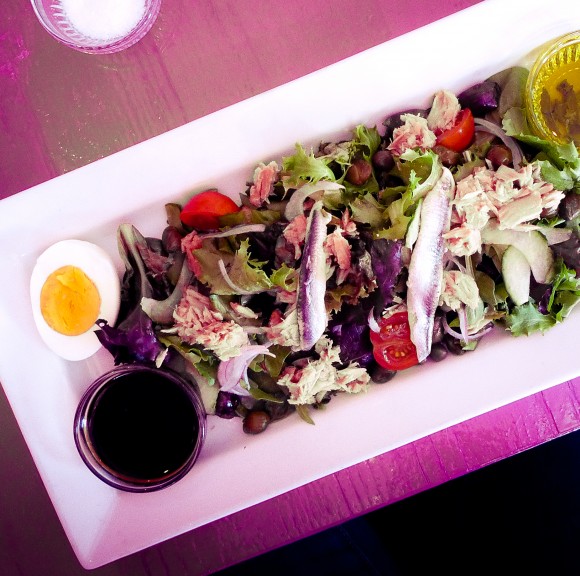
After lunch, we walked around for an hour, and headed to tea at Tealuxe right in Harvard Square. I ordered an iced Makaibari Darjeeling. I quite enjoy their tea selection, and their daily iced choices are always exciting.
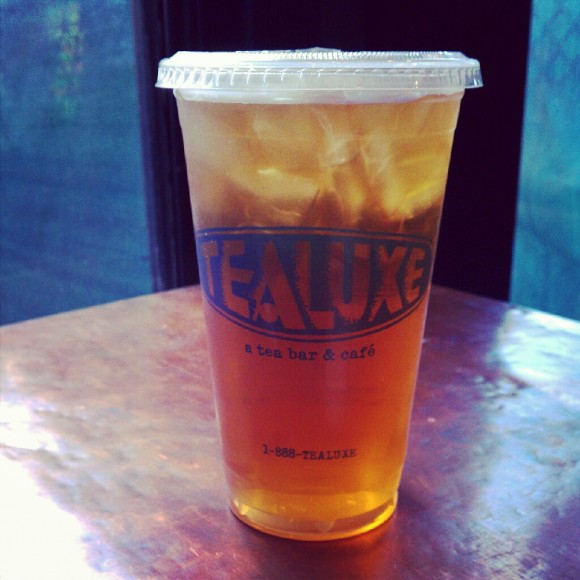
After a few hours of fun, I had to send off my wonderful friend back to Providence to catch her flight back to Houston. When I got home, I sat down to work after getting myself a snack: canned Copper River wild sockeye salmon. This was one of the last shipments I received from the Copper River marketing board, and I was hesitant to open it so soon, but the stuff is so delicious I couldn’t help myself. I mixed it with a generous spoonful of homemade mayo, a few grinds of pepper, and a large handful of chopped dill.
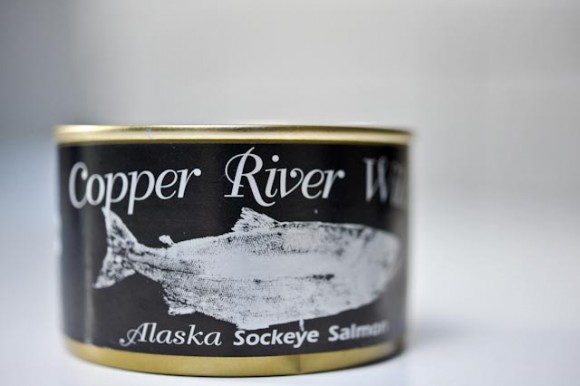
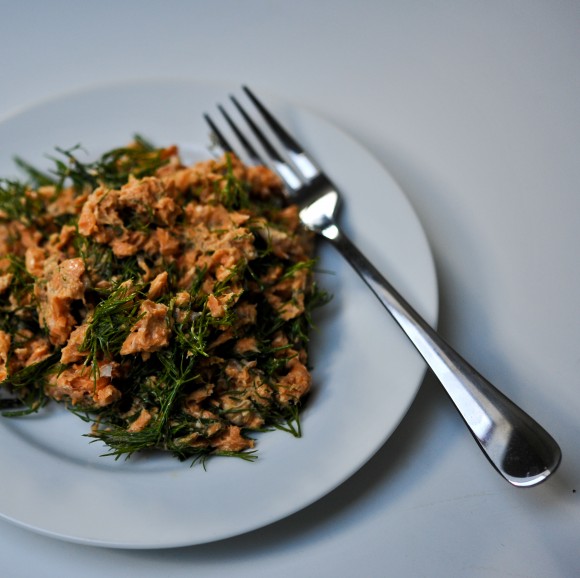
In the early evening, I set to work making dinner: beef shank stew with carrots and gremolata.
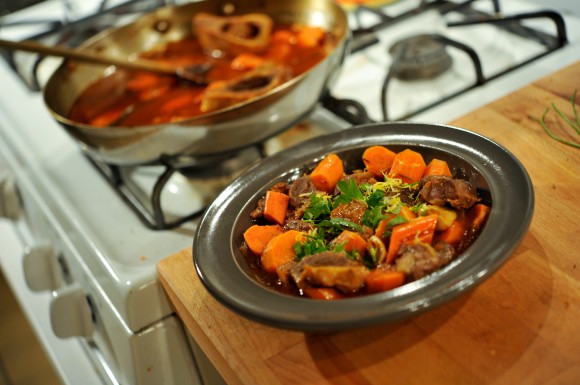
Devon got his served on a big bowl of mashed potatoes, but I just took an extra helping of carrots.
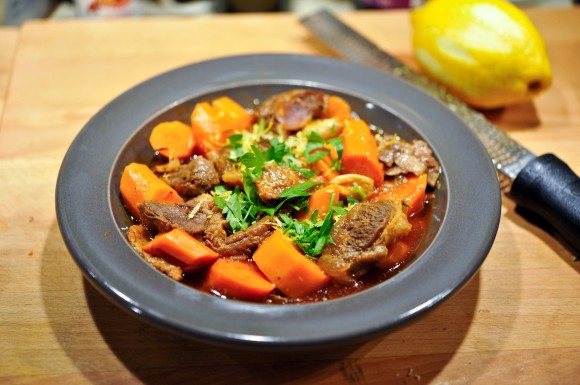
For dessert, I polished off an entire pint of raspberries before realizing that I hadn’t snapped a photo. We were watching Breaking Amish. I was totally engrossed by the “English clothing”, illicit tattoo acquisition, and that one guy Abe who seems to have such a good head on his shoulders.
by Sam Tackeff | Sep 24, 2012 | Blogging
When you write a blog, you quickly learn that you get a thousandfold more spam comments than you ever will actual comments. This can be disappointing at first, until you figure out that you can take immense pleasure in reading some of this spam every so often. I’ve noticed a new trend in spam in the past month or so – highly pertinent “foodie” spam. The topics are actually in line with your original posting, and read like so:
Spam, on Thomas Keller: “I have been to Per Se not once, not twice but thrice and it was tdcnsaenrent each and every time (Mere mention of his Oysters and Pearls inspire erections/lubrication). He owes me; however, Erika owes me not a thing. Rather, I owe her a favorite. I’m going to go with anything truffle. Truffles fill me with warmth and mirth. Godspeed, Erika. Godspeed”
Spam, on Scotch Tasting: “I don’t think I could live without a good sligne malt in the house. 16 Lagavulin or 10 Laphroaig do me just fine. The 12 year old Lagavulin cask strength was disappointing though. Too bad.I don’t think I’ve ever had Ardbeg. I’m too poor to sample them all.”
Spam, on Cabbage: “still if I step in something I always know what it is !!!As to the smell of cabage it always reminds me of when I worked with the homeless in Liverpool and the centre always smelt of cabbage and it was overcooked yugh ; it put me off it for years.”
Spam, on Pizza, and Reviewing: “The lasagna pizza doesn’t have feta on it. It is fresh rcoitta. Not intended to pack a flavor punch like feta.In fact nothing at il pizzaiolo has feta. If you really wanted to try their signature dish you would have tried the margherita D.O.C. which is made with imported San Marzano tomatos, buffalo mozz, extra virgin olive oil and fresh basil the closest thing you can get to what you’d eat in Italy.If you are going to write a review, at least get your facts straight. I’m relived I had eaten at il Pizzaiolo before reading this review not only because I would hate to have missed the pies at il Piz, but also because now I know not to take you seriously as a food-reviewer.” {Editor’s note: Oh thank goodness, I was worrying how you would judge me.}
I’m guessing that some of these are actually scraped comments from chat boards or blogs, and I’m certainly glad that Aksimet catches them, but I’ll award points to spammers for changing it up. I’ve been so sick and tired of Viagra advertisements.
For more entertainment, please spend some time over here at “Tom Reads His Spam”, where you can hear Tom reading his own spam in dulcet tones. I’m particularly fond of this one.
Do you take pleasure reading your spam? Bonus points if you share the most creative spam you’ve received here.
by Sam Tackeff | Jan 8, 2012 | Blogging, Books, Writing
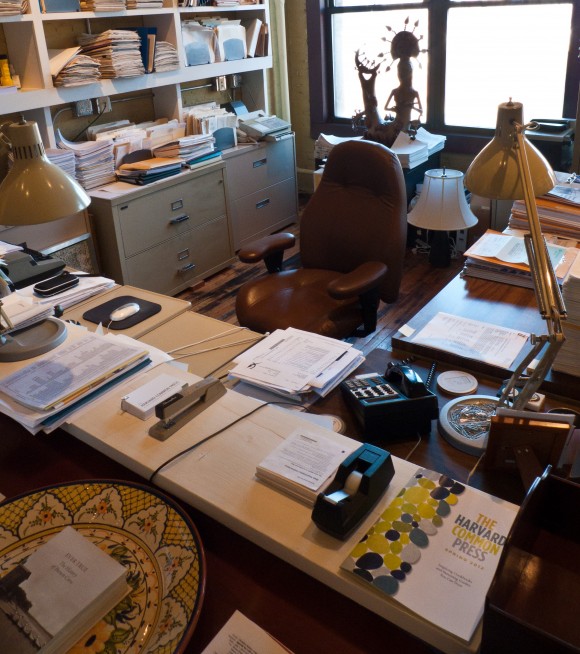
Last month I got to visit the gorgeous offices of Harvard Common Press not once, but twice, and let me tell you – I’m about ready to move in there.
The second trip was with Boston Brunchers, founded by the multi-talented Renee Hirschberg. Renee works full time, is getting her masters, blogs several times a week, and runs a real life community whisking lucky bloggers to brunch several times a month in the Boston area.
This time she managed to swing a doozy – brunch for 40 at Harvard Common Press, complete with a question and answer session about publishing a cookbook with HCP’s associate publisher and digital media director Adam Salomone, owner Bruce Shaw, and marketing director Nancy Grant Mahoney (who’s name was too long for her Twitter handle, and got cut off – perhaps fortuitously? – to “Mahon”, a delightful cheese).
Writing a cookbook can be a two year process (or more). Here were some of the details in a snapshot:
Finding your Publisher:
- Use Social Media to make friends with publishers: HCP has published authors they have gotten to know through Twitter!
- In thinking about your blog and brand, remember what you are passionate about.
- Engagement level: HCP will address many different aspects when evaluating a potential author. For bloggers, this includes writing, photography, voice, knowledge and interest, compete.com traffic, blog comments, twitter and facebook usage.
Process: so you’ve made it! You’ve waded through and have a publisher. What can you expect next?
- Material Sources: It used to be that you could use 25% of previous blog recipes, now most publishers expect your cookbook to be 100% new material. (More work for you!)
- Editorial Process: At HCP, editorial director Dan Rosenberg helps authors come up with a work plan, the developmental stage that helps you assess what needs to be in your cookbook.
- Writing the manuscript: This can take 9-12 months, and realistically if you are a blogger, this means a lot less time eating out, cooking for the blog, and blogging in general.
- Editors: You’ll likely have a robust back and forth with your editors. You’ll bang your head, panic, go a little crazy. This is good.
Ultimately, you, the editor and the publishers have the same goal in mind – to make your cookbook the best book it can be.
Once published (or almost published): Publishing houses used to have in-house marketing and do everything to pub and market a book. Now, authors can work closely with the publisher to promote the book. Bloggers have a built in market, and HCP works with the author with a wide variety of social media tools including tweet tours, blog tours (where the author may guest post on 10 or more different blogs), and in person tours.
(If you write a book, you can give a talk at Omnivore! Just make sure you ask Celia to provide some wine!)
* * *
One more note, from me. If you want to write a cookbook, but aren’t ready to take the plunge, consider working for a published cookbook author on their next book. You will wash a lot of dishes, learn an enormous amount about the process, and be well–prepared when you eventually decide to write your own.
* * *
Bruce Shaw, owner of Harvard Common Press, on Bloggers: “You are technically our competitors, but you are also our life blood here!”
* * *
And some photos of the office:
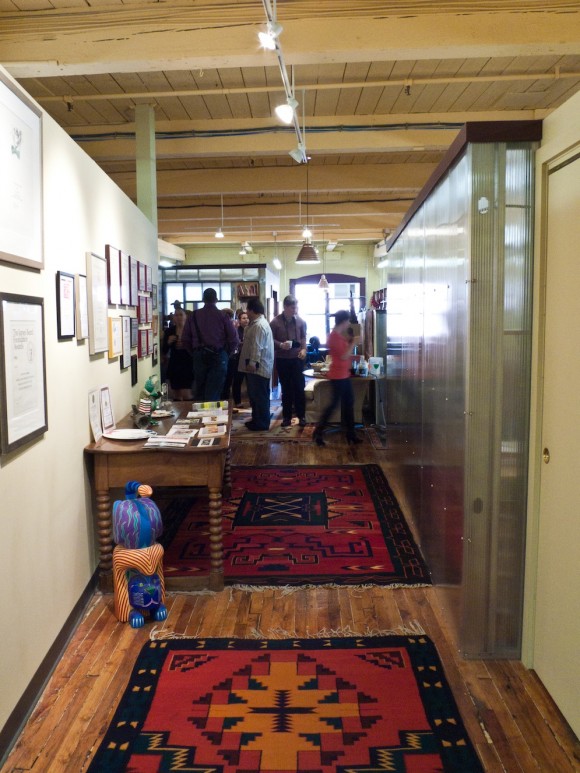

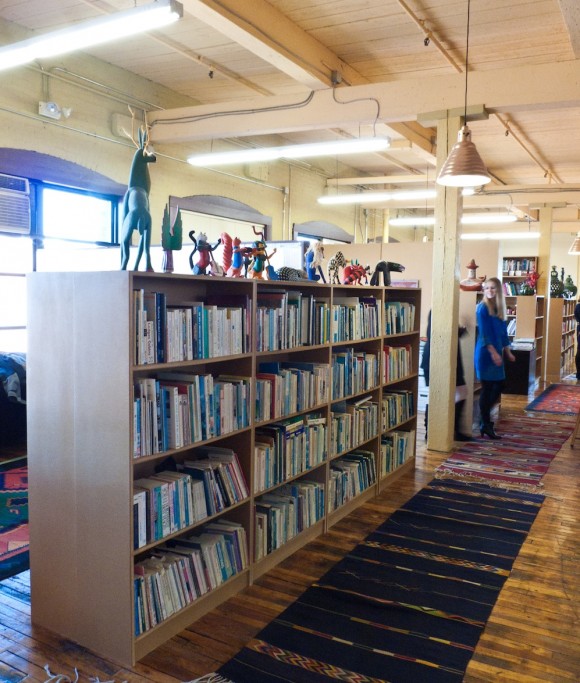
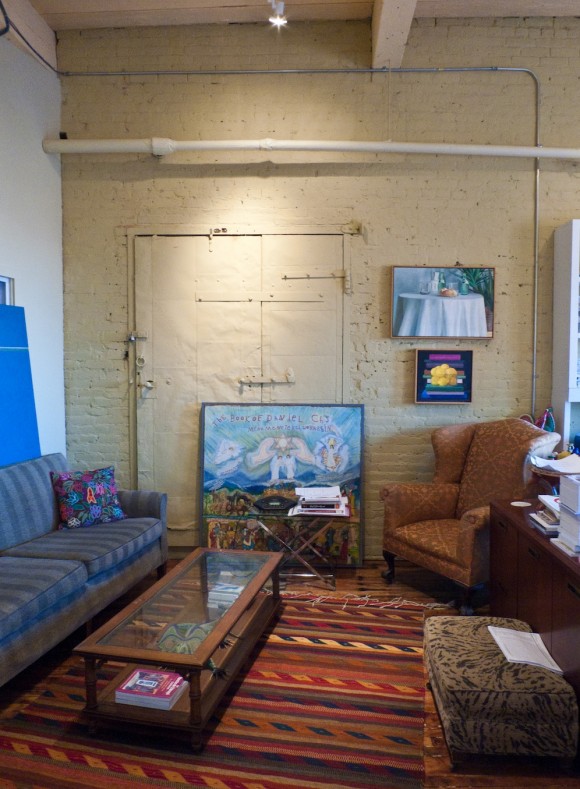
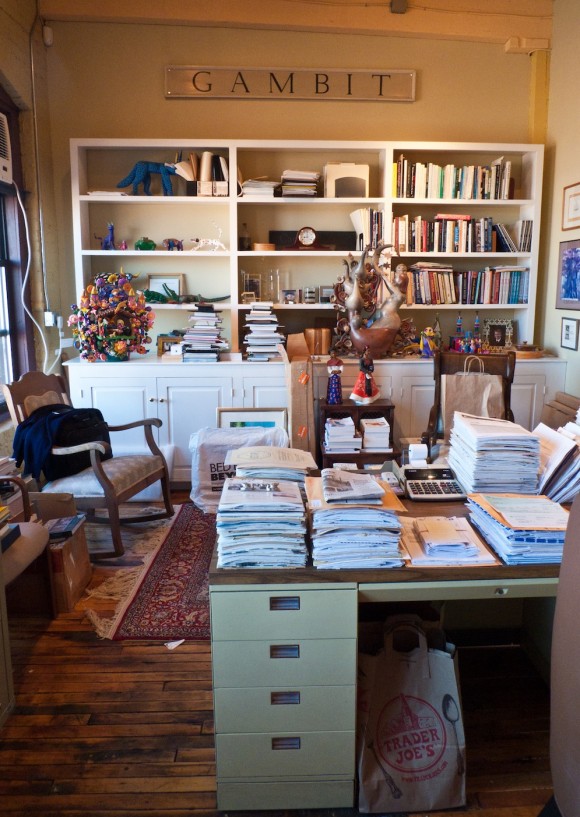

A big thank you to the kind folks at Harvard Common Press for letting me snoop around!
Harvard Common Press
HCP Dishes Blog:
HCP Blog Eats (new in the blog world): http://www.blogeats.com/
by Sam Tackeff | Dec 2, 2011 | Blogging, Tea
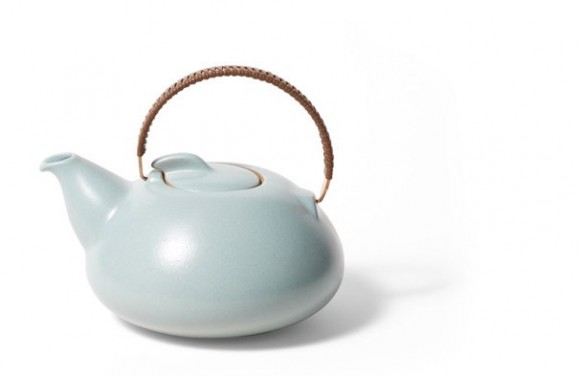
(Coveted Teapot via Heath Ceramics)
“The answer, I believe, is identifying the things you love (particularly the little things) and seeking to experience them each and every day.”
A friend of mine emailed me a few days ago to let me know that she really liked this quote I had written. I was completely flattered, but also a little bit surprised because I didn’t remember writing it – sometimes the words just end up on the page – but sure enough, there it was, and it was a nice thought to savor this week.
And so, here, I’d like to introduce to you a little project I’m embarking on. While working on my life list, of the big and small things I want to do and accomplish and learn, one of my happy topics was tea. I love tea, I drink a lot of it. I love the moments that surround tea drinking, and tea culture. With tea, I’m calm and peaceful, creative, and sometimes challenged. So I decided to add tea to my list, 500 unique moments with tea, and I’m going to try to share as many as I can here with you.
There is something so wonderful about starting a new passion project, and adding a new sense of purpose to your life, and finding a new lens through which to look at the world. I’ve been having fun shaping this adventure – and I think it’s going to take on a life of its own as it goes along.
In designing this project, I wrote out a series of questions, and I think I’d like to share them with you, in hopes that maybe this inspires you to take on a project of your own. For this part of the process I really wanted to put ideas out there, without any intention of answering them (yet). I find this is a good exercise to start any type of project.
- What is this project really about? Is it about tea? Is it about people? Places? Solitary moments? Shared moments? Moments where I feel alive?
- How do I best communicate this project? Public vs. Private?
- Do I want to take 500 pictures of tea? (Yes.) How can I make these pictures tell a story?
- What do I want to write about? How do I organize my thoughts to share? How much, or how little can I share?
- What type of consistency am I looking for? One cup a week? One cup a day? Should I have a schedule? Do tea tastings count?
- What books do I want to read about tea?
- What are the greater themes that relate to tea?
- How much depth do I want to give to this project?
- Does this stay on The Second Lunch? Do I dedicate a website to the project?
- How can I subsidize the project?
- What if I decide that I really want to have 500 cups of coffee? (This could have easily been five hundred types of cheese, another passion of mine, but that got nixed because 500 one ounce pieces of cheese could easily translate into 14 pounds in the long run. Tea is a little more up my alley.)
- How long will this take? Is five hundred unique cups of tea enough? Can I double up? 500 blends of tea? Am I going to have to drink 1000 different types of tea? (aka.. will this spiral out of control).
- What do I want to get out of this at the end? Is the visual record enough? Is there a book in the making?
- What type of expertise am I trying to gain? Is this about savoring the experience? Cataloguing data? Keeping score? How do I make sure that I keep this enjoyable?
- Am I allowed to quit?
And so here is where you come in: I’d love to solicit ideas to help me shape this project. Make it better. Make it more fulfilling for me (and for you). Do you have your own passion project? (Share a link here if you’d like!) I wholeheartedly welcome (and encourage) comments, or emails (sam at thesecondlunch.com) to help strategize. You will be thanked profusely, and who knows, maybe get something out of it in the long run.
by Sam Tackeff | Sep 30, 2011 | Blogging

Some musings, this afternoon, on the ethics of food blogging.
Dianne Jacob, author of “Will Write For Food” (the book anyone interested in food writing should own), posted a piece this week entitled “5 Ways Bloggers Changed Restaurant Reviewing“. In the wake of Sam Sifton stepping down from his post as reviewer at the NYTimes, she observes a shift in restaurant/reviewer dynamics (both positive and negative) that she attributes to food bloggers. What are food bloggers doing differently?
According to Dianne: “Food bloggers don’t wait to review. Restaurants have opening events for bloggers. Bloggers are more likely to cover an event than to review the food. Blog write-ups are more positive than print reviews. Bloggers celebrate all kinds of restaurants, not just fine dining.”
Before I comment, I want to say that Dianne’s posts are always thought provoking. Usually I agree with her, but even when I don’t I appreciate her clarity, opinion, and commitment to discourse. (She’s also brilliant at responding to comments.) In this case, I agree that a shift has occurred but I’m not sure to what degree these generalizations about food bloggers are the cause. I’m pretty sure that Sifton didn’t step down because of Yelpers and bloggers. But, the piece did make me question my role in the shift.
As queen of my small corner of the internet, The Second Lunch, am I a culprit? Do I commit blogging sins? Ethical blunders? Have I unintentionally axed Sifton when I write about Ma Po Tofu in Belmont?
I like to eat out, and I like to write about my experiences. Writing about a good experience extends the pleasure of the event, and is in itself a little hedonistic. Nobody pays me to write about bad experiences – so I usually don’t – but I recognize this is probably a mistake on my part. Some of my favorite pieces by other writers are negative reviews. Writing honest distaste is a craft in itself.
For a long time, I avoided writing about any restaurants or products because I didn’t want to offend anyone. I wasn’t sure that it was “fair” to write about something that I’ve only experienced once or twice, and frankly, I didn’t want to get un-invited to a future event because of a negative slant in my posts. I used to be much more snarky on my personal blog, and I’ve held myself back in this slightly more public space by an invisible standard I’ve been trying to set here. An erroneous standard, I believe. Why should I be afraid of my experiences swaying an audience? Some people are more critical in print than they are in person. I’m the opposite. I’m never afraid to speak my mind to someone in person. (My closest friends are chuckling at the understatement.) Now, people who I’ve never met read this blog. I know they do, because somewhere along the line I started obsessively checking my Google Analytics and Feedburner, sigh. As more people started reading, I committed a sin: I tried to be someone I’m not. I held back because I was afraid. I denied myself the experience of writing because I didn’t want to offend anyone by being myself. Yes, I understand this is counter-intuitive. And it made for some terribly boring writing.
Which brings me to my first goal in this space: becoming a better writer. What makes a good writer? Practice. Let’s face it, I don’t have the time or financial assets to practice writing traditional print-style reviews. And in order to become a good writer, you have to write what you know. So sometimes this means that I write about a place that just opened, or an event that I’ve been invited to. I’d love to write about my meal at Per Se, but I can’t afford that. I’d love to write long form pieces, but a blog isn’t really the ideal space to write 3000 words. So I write about my little experiences. I could write these pieces and file them away for thirty years, or rip them up because they aren’t good enough, but the internet allows me to self-publish. Publishing here motivates me to work harder at my writing.
My second goal? Being part of a community. I’m not sure that someone who publishes reviews of restaurants in a major publication feels the same sense of community as those who write (and read) food blogs. Traditional media has long relegated the writer to a lonely position. The Dining & Wine section doesn’t offer space for comments. When I write a post, I’d like to think that I’m offering a reader an opportunity to live vicariously and encouraging discussion. I like reading and responding to comments. I like the conversation that spills off the blogs and onto Twitter. I like the fact that I’ve met so many people because of this space.
As a part of the community, I feel obligation to both my readership and society at large. I was interested to read one of Dianne’s responses in the comments of her post: “If your sympathy is on the side of the restaurant, you are not representing your readers.” While I agree that traditional reviewing requires you to be on the side of the reader, as a blogger I also have a relationship to the food world in its entirety, including restaurant owners, chefs, authors, etc.
Who am I writing for? Unlike a traditional reviewer, I’m writing for myself as much as (and sometimes more than) I’m writing for a reader. My blog is a place for self-discovery.
What about anonymity? I’m not anonymous, because I want to interact with members of the community. I want to learn. When I take photos, I’m taking them for myself and for my readers. I understand ethics, and reasons why one might want to conduct an anonymous review, but I submit that so many people have the desire to share things publicly now that a blogger wielding a fancy DSLR will rarely affect the quality of the meal. Bloggers are now required by law to disclose freebies, and I when I read about a free meal a blogger received, I take that into account – just as I take into account the fact that a professional reviewer is often being paid to eat at a restaurant, and doesn’t feel the sting as much as someone who has to shell out the cash on their own. (Although this is changing as more print-media reviewers are seeing major budget cuts).
Accepting freebies? A few years ago I was at a dinner with Dianne (same one!) and her husband Owen. Owen worked as a professional technology reviewer, and told me (to my surprise) that reviewers must return test products as part of an ethical standard. I think this is changing. I don’t find it to be an ethical conundrum to accept free products. I just don’t.
And how about other food bloggers influencing my actions? The bloggers who intrigue me are the ones who don’t gush, who write thoughtful pieces, and who seek a wide variety of personal experiences. As a reader, I’m wary of those who constantly shill for free products and PR events, but I don’t discount them automatically because they accepted something free. You read enough crap and you very quickly learn to skip over the fluff, and seek out the good stuff. Earlier this week Jen at Tiny Urban Kitchen put up a mini-review of Clover, a restaurant in Harvard Square I’ve been meaning to try. The review wasn’t glowing, but it was positive. The photos were excellent (most in-print publications can’t afford to have so many high quality photos in their articles). When my friend Amanda texted me at 8:30 in the morning letting me know that there were *free cider donuts* at Clover I sprinted out of bed. A blogger had planted the seed, and yes, I succumbed to a freebie.
I’d love to hear your thoughts in the comments, but keep it civil please! I don’t want to have to reach out from my sovereign territory and hit someone with a stick. But I can! Because I’m a blogger!
So my questions for you: a) Do you write about restaurants? Why? Are you “reviewing”? b) Do you accept freebies? Have any qualms? c) Who are you writing for?



















